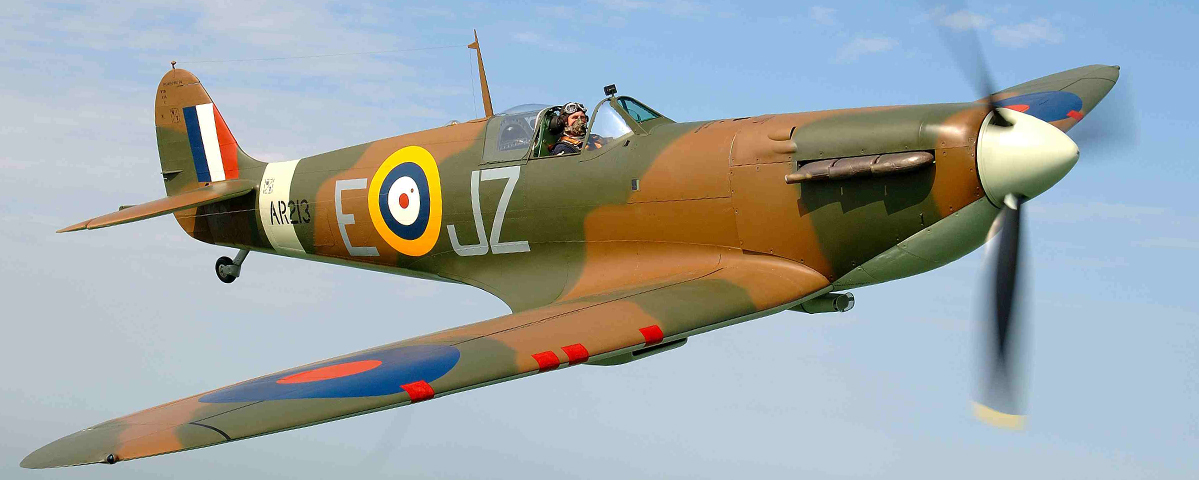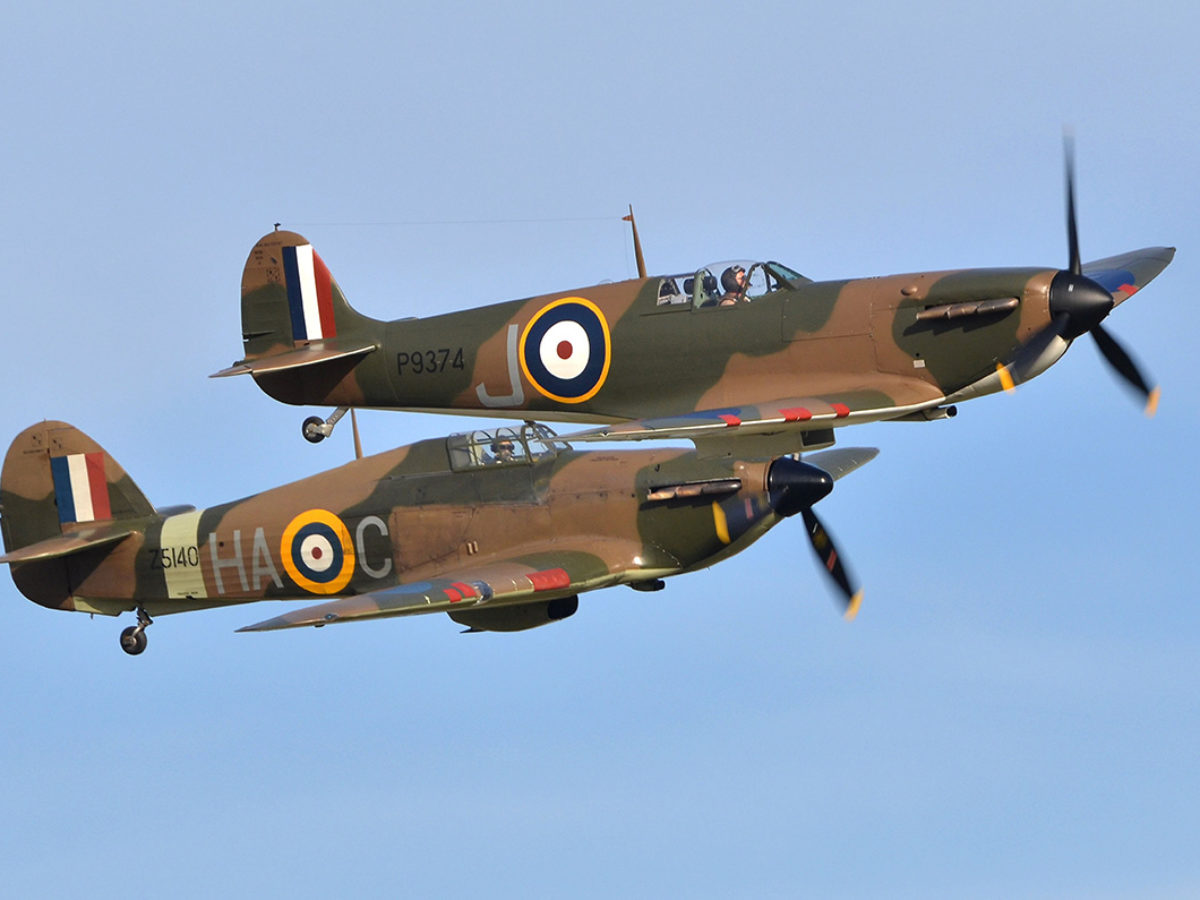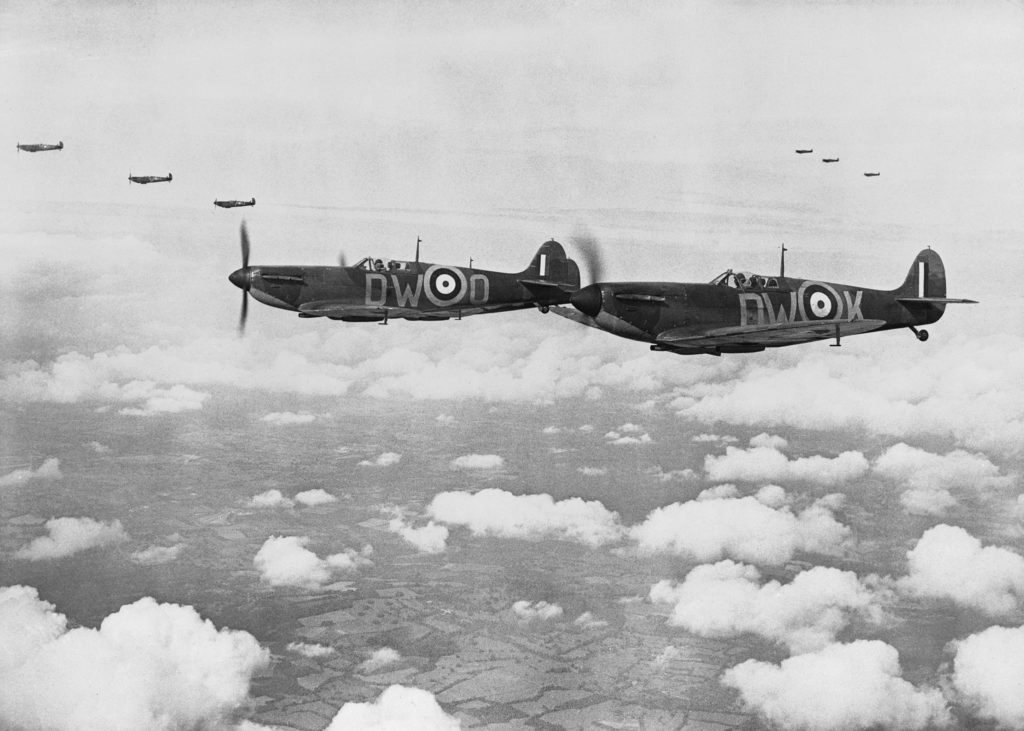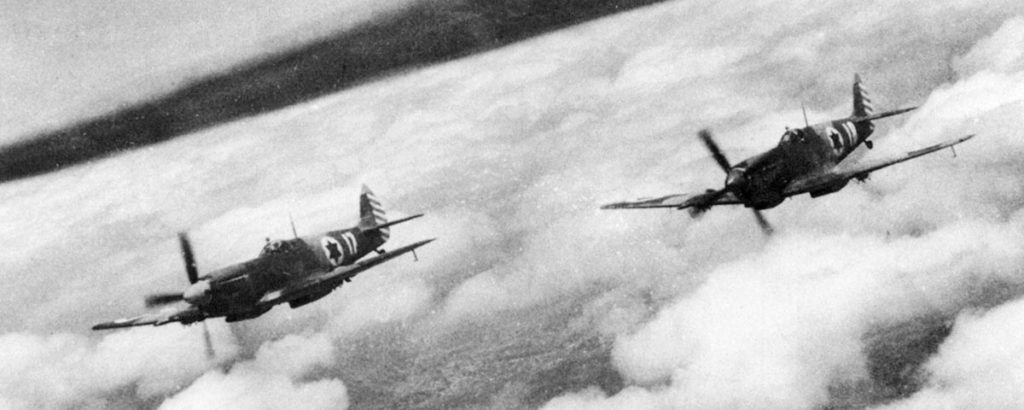The silver aircraft, displaying the familiar lines of history’s most legendary fighter, banked to land at the British colony of Singapore on New Year’s Day 1951. Switching off its engine, Group Captain Wilfred Duncan Smith may have reflected on the significance of the mission he had just led: The attack on Communist positions in Malaya was the last combat operation of a Royal Air Force Spitfire.
Eleven years earlier, in a chapter as glorious as any in its tumultuous history, Britain stood alone against a cruel enemy and handed him his first defeat. To meet that challenge it fielded, just in time, barely enough of Supermarine’s magnificent fighters. To the British, the Spitfire was more than a machine. It was an icon — like the name itself, a symbol of the nation’s defiant stand against the Nazi juggernaut and a boost for the morale and spirit of its people.
But the fighter nearly didn’t leave the drawing board, and its designer, a figure of almost Shakespearian triumph and tragedy, never saw it go into production.
YOUNG VISIONARY
Twenty-five-year-old engineer Reginald J. Mitchell was appointed chief designer of Supermarine Aviation in 1920, and over the next 16 years would be responsible for 24 different aircraft — fighters, bombers and flying boats. Supermarine was one of the few British airplane manufacturers to make a profit during the Depression. It produced flying boats, elegant airborne examples of the boat-builder’s craft, with fabric-covered wings, taut bracing wires and varnished mahogany hulls. One, the luxury Air Yacht, allowed the wealthy to“cruise” between Mediterranean resorts. The more utilitarian Walrus amphibian would rescue many airmen from the sea in World War II.
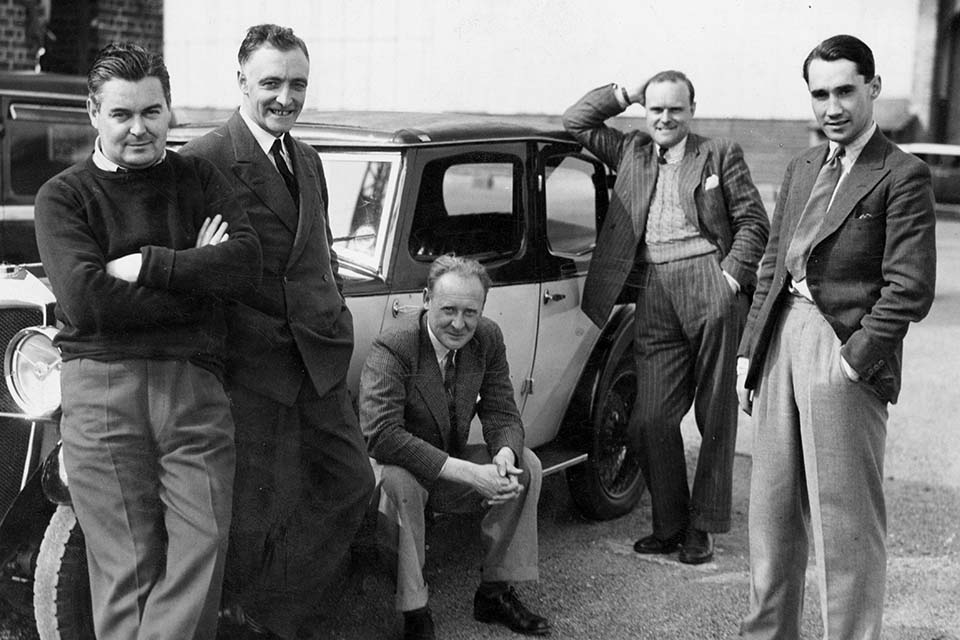
Mitchell developed Supermarine’s wartime N60 into the Sea Lion, at 150 mph faster than many fighters, to win the 1922 Schneider Trophy flying boat race, which was fortuitous. Italy had won the two previous events, and a country winning three times in succession would possess the trophy in perpetuity, which would have meant the end of the races and likely precluded the Spitfire’s development.
Recommended for you
America’s 1923 success with Curtiss CR-3 Navy racers convinced Mitchell that future winners would not be flying boats but floatplanes, with stressed-skin monocoque construction instead of fabric-covered tube frames. His S4 monoplane was a quantum advance, with cantilever wings and a 700-hp, 12-cylinder Napier Lion engine.
U.S. Army Air Service Lieutenant Jimmy Doolittle, later to lead the famous April 1942 raid on Japan, won in 1925 (the races were now held in odd-numbered years). But Mitchell’s S5 and S6 triumphed in 1927 and 1929. The S6, powered by a Rolls-Royce R engine, began a relationship that would be crucial in future years.
Faster and faster
Victory in 1931 would gain the trophy forever for Britain, but, due to the Depression, the government withdrew support. Nor could Supermarine afford to fund a new racer — a devastating blow to Mitchell and his team. Lady Lucy Houston saved the day by donating £100,000 to underwrite the effort. RAF Flight Lt. John Boothman flew the S6B, its Rolls-Royce R developing a staggering 2,350 hp, to win at an average 340 mph over the seven-lap course. The second S6B later set a world air speed record of 407 mph, remarkable for an aircraft carrying huge floats when the fastest fighters of the day could only reach about 250 mph.
In little more than a decade, the stimulus the races gave to aircraft and engine technology had resulted in speeds leaping from not much faster than express trains to well over half the speed of sound. After the exhilarating years of races and records, Supermarine continued building flying boats but encouraged Mitchell’s team, which had designed every British Schneider Trophy winner and had more experience in high-speed flight than anyone else, to compete for the RAF’s new fighter designs.
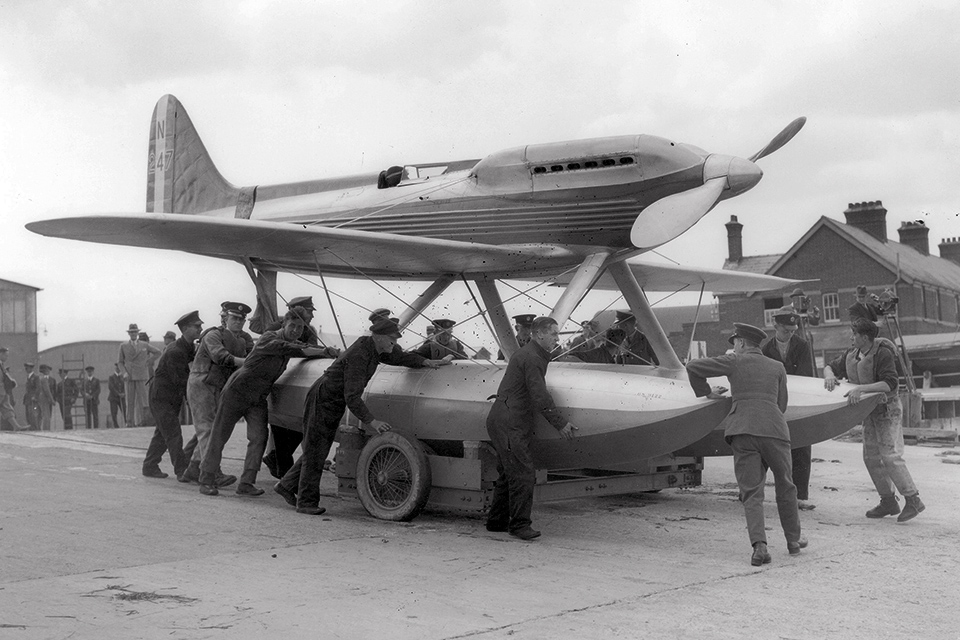
Air Ministry officials still favored open-cockpit biplanes and, since most RAF airfields were grass, insisted on low landing speeds. Mitchell set out to convince them that multi-gun, high-speed monoplane fighters would be crucial in a future war. Supermarine was now part of Vickers-Armstrongs, a giant engineering and armament company. Chairman Sir Robert McLean gave the go-ahead for a private venture, a plucky decision during the Depression. In late 1934, some enlightened Air Ministry personnel authorized £10,000 to help fund construction of a prototype to meet specification F.37/34’s 275-mph requirement. The resulting Type 300 exceeded it by more than 60 mph.
Meanwhile, Mitchell was facing a personal crisis. Two years earlier he had had surgery for colon cancer, almost dying on the operating table. The grim prognosis would have induced most men to slow down, or even retire. But while convalescing in Europe, he met some Luftwaffe pilots, witnessed Germany’s rearmament and belligerent leaders, and returned home convinced that war was inevitable. This plus the knowledge that his time was short galvanized him into even greater exertion.
Departing from the ministry’s specifications freed Mitchell from design constraints. The narrow-angle V12 Rolls-Royce Merlin allowed a slim, monocoque fuselage. Mitchell insisted on the wings being as thin and as strong as possible, with low drag, superior maneuverability, mild stall characteristics and high-speed capability — an apparent engineering conundrum that even the brilliant Willy Messerschmitt never solved.
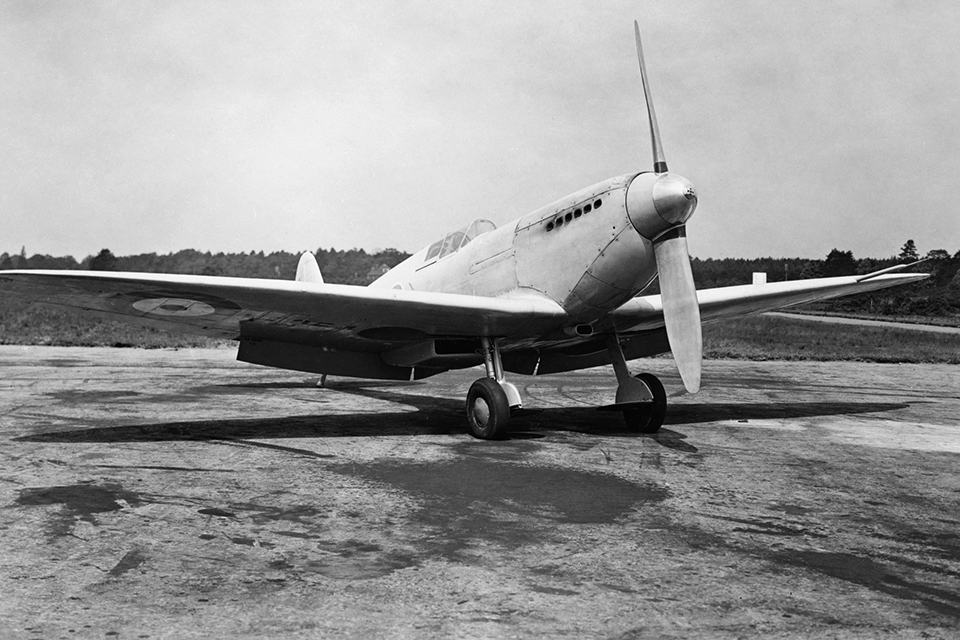
The resulting double-ellipse shape, largely the work of Beverley Shenstone, with a main spar of hollow sections slotted into each other, was exceptionally strong and had a low loading of 26 pounds per square foot. The Messerschmitt Me-109’s was closer to 40 psf, allowing the Spit to outturn it — a critical factor in a dogfight. Despite their thinness, the wings could house eight .303-inch machine guns (later four 20mm cannons), ammunition belts, undercarriage, coolant and oil radiators, flight controls and other essentials.
The design was so advanced it could reach high Mach numbers. In 1943 Squadron Leader J.R. Tobin dived a Spitfire XI to an indicated airspeed of 675 mph (Mach 0.92). Flight Lieutenant “Marty” Martindale landed safely in 1944 after his overspeeding propeller departed the aircraft with a bang at 606 mph. And in 1951 Flight Lt. Ted Powles flew a Griffon-powered PR XIX to 51,550 feet, a world record for piston-engine aircraft. When cockpit pressurization began to fail, Powles had to lose altitude rapidly, reaching 690 mph — Mach 0.94. (The Me-109’s controls tended to freeze in a high-speed dive, as many an unfortunate Luftwaffe pilot discovered just before augering in.) Vickers test pilot Jeffrey Quill wrote: “That any operational aircraft off the production line, cannon sprouting from its wings…could easily be controlled at this speed when the early jet aircraft such as Meteors, Vampires, F-80s etc. could not, was extraordinary,” especially when almost nothing had been known in the 1930s about aircraft behavior at transonic speeds.
The Spitfire wasn’t a great deal heavier than the legendary lightweight Japanese Zero, which had no armor, bulletproof windscreen, self-sealing tanks, starter motor or, usually, radio. In a moderate wind the Spit could be airborne in 50 yards, while the heavy P-47 Thunderbolt needed closer to 500. Spitfire pilots on shared airfields would take off and perform rolls while Thunderbolts labored to get off the ground.
How the spitfire got its name — and almost became the shrew
Supermarine’s fighter names had to begin with “S” and signify something small and ferocious. Mitchell’s creation almost became the uninspiring Shrew until chairman McLean suggested shortening his daughter Annie’s nickname, “Little Spitfire.” Mitchell was not impressed: “Just the kind of bloody silly name they would choose.”
This superb blend of structural strength, agility and high-speed capability made its maiden flight on March 5, 1936. With an engine of massive torque in a light airplane, test pilot Captain Joseph“Mutt”Summers began the takeoff roll 35 degrees from his intended direction when airborne, a legacy of racing seaplanes, which would swing nearly 90 degrees before they left the water. Summers found it easy to counteract any swing with the rudder. After an uneventful flight he directed, “I don’t want anything touched” — not that the aircraft was perfect, he just wanted the controls left as he had set them, for the next flight.
The new fighter was a huge departure from previous designs (the contemporary Hawker Hurricane, for all its admirable qualities, was essentially a monoplane development of the Hart and Fury biplanes). The ministry’s new specification F.16/36 so closely replicated Mitchell’s design that it was more a case of the specification being rewritten to meet it, rather than vice versa.
But Mitchell still had to contend with officialdom, tradition and myopic thinking. Right up to the Battle of Britain, a majority in the Air Ministry held that radical new fighters were a waste of resources. It was inconceivable to them that France — with a 550,000-man army, its “impregnable” Maginot Line, modern warplanes being developed, and more and better tanks than the Germans — could fall. There would be no fighters dogfighting over Britain; only bombers could reach it from Germany. High speed was unimportant: A few squadrons of Hurricanes — at least 100 mph faster than contemporary bombers — would suffice. The 1936 budget called for 68 bomber squadrons and only 20 fighter squadrons.
Mitchell wrote: “A lot of people felt that the Spitfire, although it had a good performance … was going to be a much more expensive and difficult aeroplane to mass produce and a much more complicated one to service.” Fortunately for the Spitfire and Britain, Air Vice Marshall Hugh Dowding, later to head Fighter Command, possessed a keen interest in technology and a stubborn nature. In charge of the RAF’s technical development, he believed “the best defense of the country is fear of the fighter,” and urged the development of advanced fighters and another weapon that would prove decisive: radar. Without Dowding the Battle of Britain could have been lost in a matter of days.
outracing hurricanes
But the prototype Spit was slower than the Hurricane. Unless its top speed improved, the project was dead on arrival. With a modified propeller design, as test engineer E.H. Mansbridge wrote: “Jeffrey [Quill] went off and did a set of level speeds with it. When he came down he handed me the test card with a big grin and said, ‘I think we’ve got something here.’ And we had … 348 mph, which we were very pleased with.” Further improvements, and more powerful Merlins, would raise this to more than 360 mph in time for the Battle of Britain.
Mitchell was not out of the woods yet. Some thought that, due to its racing origins, the aircraft would be too difficult for average pilots to handle. In May 1936, the RAF evaluated the prototype. Aircraft and Armament Establishment commander Flight Lt. Humphrey Edwards Jones, who had taken it up to 34,700 feet, was asked whether it could be flown by ordinary squadron pilots. “Yes it can,” he declared, “it was a delight to fly.” On this recommendation, a contract for 310 production aircraft was awarded. (Edwards-Jones later confessed that he’d almost wrecked the only Spitfire by nearly landing wheels-up, a common error by pilots used to fixed undercarriages. At his suggestion, production planes had warning horns.)
The Spitfire and Hurricane made their public debut at the annual RAF Hendon pageant. As the new fighters tore across the sky, the awed crowd heard for the first time the glorious song of the Merlin engine, a sound that would soon become familiar. As it turned out, however, the prototype Spitfire was the only one to fly for two years.
The contract awarded was tiny, in view of the more than 22,000 eventually built, but the prospect of converting a hand-built prototype into a production machine caused consternation at Supermarine. Its workers were craftsmen, not large-scale manufacturers; their biggest previous order had been for 79 flying boats for delivery at the rate of 10 per year. They’d never made 310 of anything, let alone something as difficult to produce as the Spitfire. Those elliptical wings had almost no straight lines and, with their multipart main spar, were not easily mass-produced. The fuselage and wings required creating special tooling, and the intricacies involved in making even minor parts, plus Supermarine’s inexperience in subcontracting, resulted in painfully slow production, even as war clouds gathered. At WWII’s outbreak, the RAF had only nine Spitfire squadrons, and when the aerial battles moved to England in 1940, only 11 more. Fortunately, there were many more Hurricanes.
in the shadow of death
Despite knowing that he was living in the shadow of death, Mitchell maintained control of the project and never slackened his pace. He would either be in the design department or at the airfield, taking notes and dis cussing a flight with the pilot. He even obtained his pilot’s license, saying he could better understand the challenges pilots faced. On some tests he would follow the Spitfire into the air and study it in its natural element.
In 1937 the cancer returned, and he met it with characteristic fortitude. He died on June 11, secure in the knowledge that his creation was performing as he had hoped and would soon be in RAF service. He was only 42. Chief Draughtsman Joseph Smith succeeded him and would supervise the development of the fledgling aircraft into the Mark I fighter, and its successors up to the final Mark 24.
On August 4, 1938, Quill delivered Spitfire K9789 to No. 19 Squadron, the first operational example of what would become the backbone of the RAF’s fighter force until the jet age. Squadron Leader Henry Cozens, the first RAF pilot to fly it, had started on Sopwith Camels in 1917, and ended flying Gloster Meteor jets. Remarkably, K9789 survived the war, only to be scrapped in 1945.
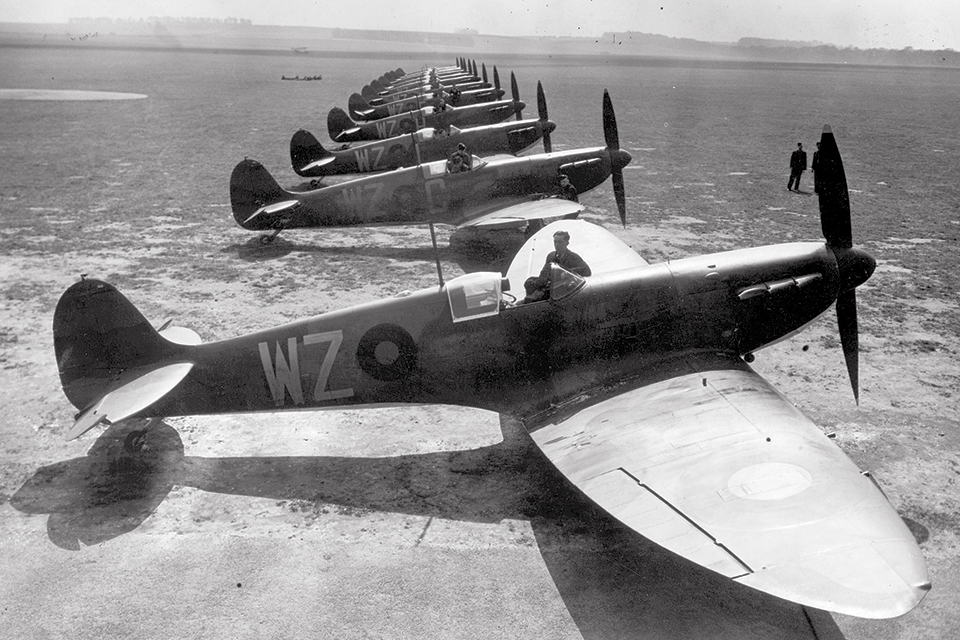
Compared with its main adversaries, the pugnacious Me-109 and Focke-Wulf Fw-190, the Spitfire might have looked too delicate for a combat aircraft, but for all its elegant lines it was a deadly and efficient killing machine. And tough. Spits have hit the ground, bounced off the sea, punched through trees, cut high-tension lines, collided in the air, been shot to pieces, lost rudders, ailerons and parts of wings—and brought their pilots back. One, shot down at low level, somersaulted along the ground shedding wings and tail, but its pilot walked away.
Like a powerful sports car, however, it could be unforgiving of careless or inexperienced handling. Drastically shortened training during the Battle of Britain had inevitable consequences. Miroslav Lisutin, a Czech pilot training at Grangemouth, recorded that of the 30 student pilots on the course, six were killed in flying accidents. Bert Hall, who had flown S.E.5a fighters in World War I, related that seven men died in the first week of his course in Scotland. Pilots were going into action with less than 10 hours on Spits.
spitfire vs. messerschmitt
The first encounters between Spitfires and Messerschmitts, during the 1940 Dunkirk evacuation, generally ended in a draw, although in one battle, on May 26, Spit pilots claimed six Ju-87B Stukas and six Me-109Es destroyed for no losses. While Spitfires were outnumbered by Hurricanes two to one in the Battle of Britain, they had a greater psychological effect. “Achtung, Spitfire!” would strike fear into Luftwaffe aircrews. Many German pilots had an unfounded contempt for the Hurricane, and when shot down refused to believe they had been vanquished by the supposedly obsolescent plane: “It must have been a Spitfire!” When asked by a frustrated Reichsmarschall Hermann Göring what he needed to win the air battle over England, an exasperated Major Adolf Galland, whose Me-109s were compelled by Göring to escort the bombers at the ideal altitude for interception by the Spit, famously replied, “An outfit of Spitfires for my squadron.”
Luftwaffe records show a loss of 1,636 aircraft — 47 percent of the Me-109s, 66 percent of the Me-110s and 45 percent of the bombers that had begun the battle in July. More devastating was the loss of thousands of trained airmen, either killed or taken prisoner. Luftwaffe aces Theo Osterkamp and Günther Rall (history’s third highest scoring fighter pilot) said Germany never recovered from these losses in men and machines, and they were felt most severely during the campaign in Russia. The Spit may not have “won” the Battle of Britain, but without it the RAF would surely have lost. Luftwaffe General Werner Kreipe described the battle as a “turning point in the Second World War….the German Air Force was bled almost to death, and suffered losses that could never be made good throughout the course of the war.”
RAF Wing Cmdr. “Johnnie” Johnson, with a record 38 confirmed victories, said: “Men came from every corner of the free world to fly and fight in the Spitfire … and all came to love her for her thoroughbred qualities.” Several dozen, from the British Commonwealth and many other countries, became aces. Seventeen scored more than 20 victories, notably Irishman Brendan“Paddy”Finucane (32), Canadian George “Screwball” Beurling (31), South African Adolph “Sailor” Malan (27), Australian Clive Caldwell (28), American Lance Wade (22) and New Zealanders Colin Gray (27) and William Crawford-Compton (21). Two legless pilots flew Spitfires: Sub-Lt. Colin Hodgkinson and legendary Wing Cmdr. Douglas Bader (20).
Pilot Officer “Red” Tobin scored the first confirmed victory by an American in a Spitfire, downing a Dornier Do-17 on September 15, 1940. The first of 13 Americans to achieve ace status in Spits was Pilot Officer Bill Dunn. Pilot Officer John Lynch, credited with 10 victories outright and seven shared, topped the list. Sixty-eight more of his fellow countrymen, flying in regular RAF units or the RAF Eagle Squadrons, including such legends as Don Gentile and Don Blakeslee, would achieve some of their ace totals flying the fighter. When the U.S. entered the war, in a reverse lend-lease, more than 600 Spitfires equipped three USAAF fighter groups and one U.S. Navy unit.
GET HISTORY’S GREATEST TALES—RIGHT IN YOUR INBOX
Subscribe to our HistoryNet Now! newsletter for the best of the past, delivered every Monday and Thursday.
RAF Spitfires also escorted U.S. bombers before the P-51 Mustang appeared. After sustaining heavy losses during early daylight bombing missions, the Americans were happy to have Spitfire XIIs of the RAF’s Tangmere Wing with them. In 1943 they escorted B-17, B-24, B-25 and B-26 formations to targets in France, sweeping ahead of the main bomber formations and then providing escort cover. The wing received the following message from Maj. Gen. Frederick Anderson, commanding the U.S. VIII Bomber Command: “American Bomber Crews are enthusiastically grateful for the splendid fighter cover provided today by the Spitfire Pilots of your Command. Following are typical comments of our crews: ‘As we were leaving the Target area a heavy formation of enemy fighters flew in to attack but almost immediately they were chased off by a strong formation of Spitfires. On the way home about mid-Channel one of our ships with half its tail blown off dropped out of formation. A couple of Spits went to the aid of the crippled bomber immediately, circled the ship and brought her home safely.’ Capt. Carrol D. Briscoa: ‘The Spit cover was perfect. I’d like to thank them personally.’”
The Supermarine Spitfire was the only Allied aircraft to be in frontline service from the first to the last days of the war and, with its Seafire carrier version, continued so for 15 years, the longest of any WWII combat aircraft — a testament to the soundness of the original design and its potential for major modifications. They saw action in 1950 in the Korean War Inchon landings. During its 11-year continuous production run, engine power would more than double and top speed increase by 100 mph.
The 27-liter Merlin was replaced by the 35-liter Rolls-Royce Griffon from the Mk. XII on. With Luftwaffe bombers carrying more armor plate to protect engines and crew, four of the original eight .303-inch machine guns were replaced by two 20mm cannons. Later marks mounted four cannons, giving the Spitfire greater firepower than the Korean War F-86 Sabre jet.
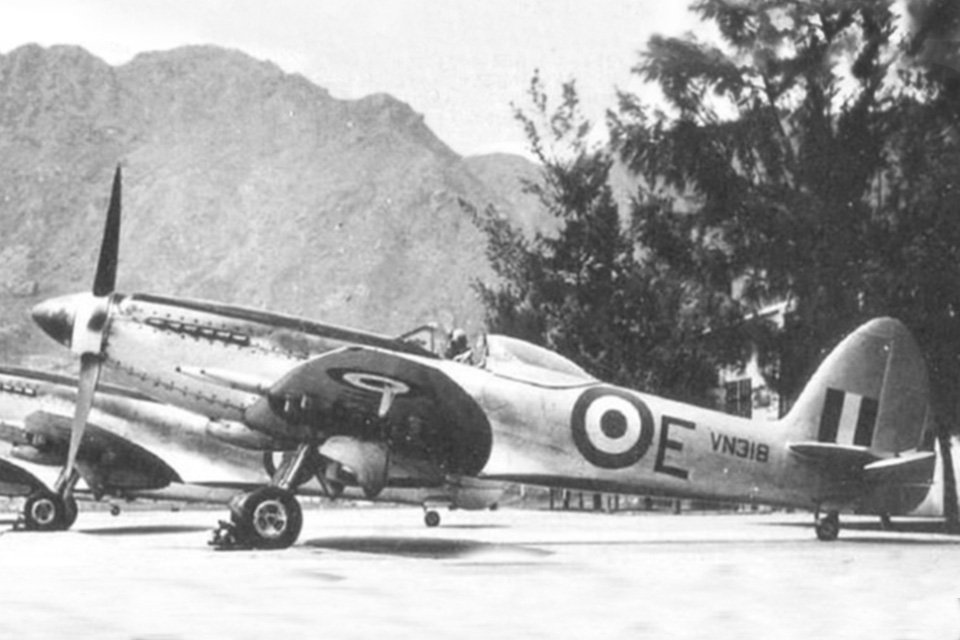
a spitfire for every occasion
The Spitfire appeared in more versions (24) and roles — interceptor, fighter-bomber, ground-attack, night fighter, floatplane, liaison, folding-wing carrier plane and long-range photoreconnaissance — than any other fighter. It was used by more Allied nations in WWII (nine), including 1,343 by the Soviets, and postwar countries (32).
The Spit originated unarmed photorecon in 1939. The later PR X, with extra fuselage and internal wing tanks, had a range of nearly 1,700 miles, more even than the long-legged P-51D Mustang. PR Spits took the first photos of the Ruhr dams after the May 1943 “Dambuster” raid, and of the Peenemünde V1 and V2 secret weapon sites.
The last Spitfire, a 454-mph Mk. 24, left the factory on February 24, 1949. On June 9, 1957, a PR19 landed after a meteorological flight— the last operation by an RAF piston-engine fighter — ending an era without equal in aviation.
RAF veteran Nicholas O’Dell last wrote for Aviation History Magazine about the Dambuster raid (July 2013). For additional reading, he recommends: The Story of the Spitfire: An Operational and Combat History, by Ken Delve; Spitfire: The Biography, by Jonathan Glancey; Birth of a Legend, by Jeffrey Quill; and The Spitfire Story, by Alfred Price.
historynet magazines
Our 9 best-selling history titles feature in-depth storytelling and iconic imagery to engage and inform on the people, the wars, and the events that shaped America and the world.


